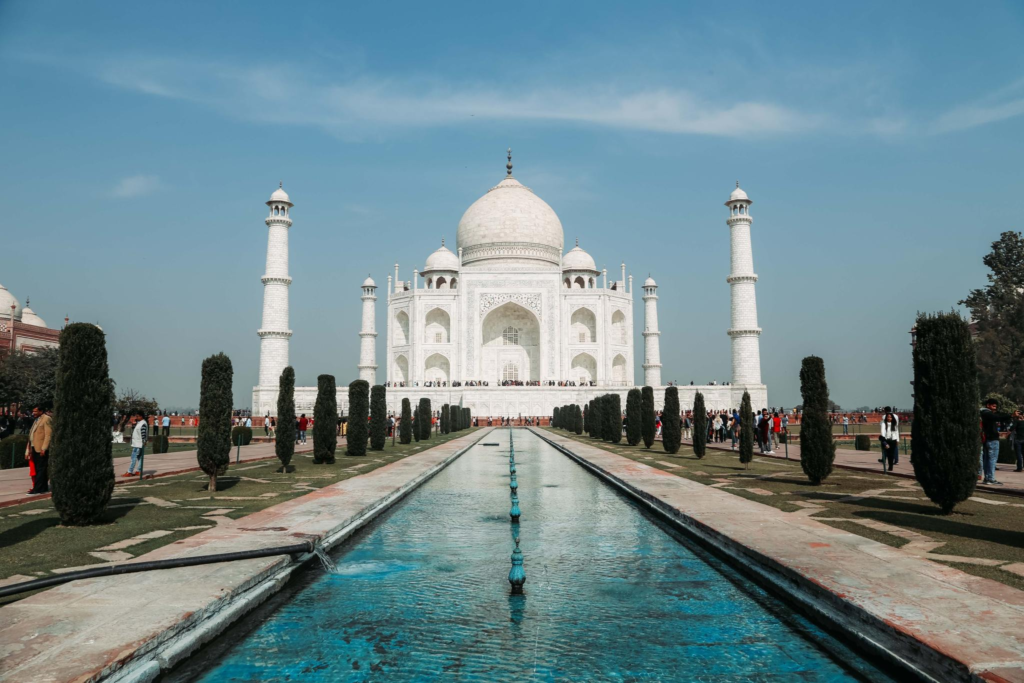
World heritage sites hold immense significance for a multitude of reasons. They serve as windows to the past, serving as crucial markers of a nation’s cultural heritage. India boasts several UNESCO-designated world heritage sites, such as the iconic Qutub Minar, the mesmerizing Ajanta Caves, and the majestic Taj Mahal, to name a few. While these sites undeniably hold great importance, India is also home to numerous other heritage gems that, although less renowned, are equally significant.
From temples to parks, here are 12 lesser-known UNESCO World Heritage sites located in India:
- Champaner-Pavagadh Archaeological Park, Gujarat: Nestled around the historic city of Champaner in Gujarat’s Panchmahal district, this archaeological park encompasses a rich tapestry of archaeological, historical, and living cultural heritage. It features ancient settlements dating back to prehistoric and medieval eras, comprising palaces, religious structures, residential areas, and remarkable water-retaining structures like stepwells and tanks. Perched atop Pavagadh Hill is a Jain temple that adds to its allure.
- Pattadakal, Karnataka: Situated in the Bagalkot district, this UNESCO World Heritage site boasts a collection of Hindu and Jain temples originating from the 7th and 8th centuries. Ten significant stone temples adorned with intricate carvings and inscriptions grace the site, with columns bearing inscriptions in both Sanskrit and Kannada. These temples include shrines dedicated to Lord Shiva, and one of them, the Virupaksha Temple, stands as a remarkable tribute to Queen Lokamahadevi’s husband’s victory over southern kings.
- Kakatiya Rudreshwara Temple, Telangana: Also known as the Ramappa Temple, this 13th-century Hindu temple is located in the village of Palampet, approximately 200 kilometers northeast of Hyderabad. Built during the Kakatiyan period, it’s dedicated to Lord Shiva. The temple’s construction materials include reddish sandstone and black basalt, and it is so ingeniously designed that its roof is said to be buoyant enough to float on water despite being constructed of bricks. The temple complex consists of three distinctive temples.
- Rani Ki Vav, Gujarat: Translating to “The Queen’s Stepwell,” this UNESCO World Heritage site in Patan, Gujarat, is attributed to Udayamati, the wife of the 11th-century Chaulukya king Bhima I. The stepwell is a remarkable architectural feat designed to resemble an inverted temple. It consists of seven levels of stairs adorned with sculptural panels featuring intricate depictions of religious figures.
- Bhimbetka Rock Shelters, Madhya Pradesh: Nestled at the base of the Vindhyan Mountains, these clusters of rock shelters offer glimpses into the earliest traces of human habitation and civilization. Comprising seven hills and over 750 rock shelters spanning 10 kilometers, this site showcases prehistoric cave paintings that depict a diverse array of themes, from animals and dance to hunting, warriors, and spirituality. It also provides vital insights into the Stone Age.
- Sacred Ensembles of the Hoysalas, Karnataka: Recently recognized as a UNESCO World Heritage site, the Hoysala temples in Belur, Halebidu, and Somanathapur, Karnataka, were constructed in the 12th and 13th centuries by the Hoysala kings. These temples, dedicated to Lord Shiva and Vishnu, are renowned for their extensive stone carvings that adorn every architectural surface. Constructed on star-shaped platforms, these temples feature ornate carvings, including depictions of Shiva and Parvati.
- Santiniketan, West Bengal: Located about 212 kilometers from Kolkata, Santiniketan is the site where Rabindranath Tagore established Visva-Bharati. Originally built as an ashram by Tagore’s father, Santiniketan welcomed individuals of all castes and creeds to meditate. The ashram includes the Upasana Griha, a glass prayer hall used for Brahmo prayers.
- Keoladeo National Park, Rajasthan: Situated in Bharatpur, Rajasthan, this sanctuary transforms into a haven for bird enthusiasts, especially during the winter season. The park, created 250 years ago, derives its name from the Keoladeo (Shiva) temple within its boundaries. Visitors may spot a wide array of birds, including herons, storks, oriental ibis, greater flamingos, and pelicans, among others. The park also hosts wildlife such as mongoose, nilgai, and sambar.
- Kaas Pathar, Maharashtra: Located in Satara, Maharashtra, this UNESCO World Heritage site is essentially a plateau covered in vibrant wildflowers. The Kaas Valley is in full bloom during August and September, with the plateau comprising volcanic rock formations and falling within the Western Ghats’ biosphere. The valley is adorned with delicate flowers, some as small as fingernails, attracting butterflies.
- Capitol Complex, Chandigarh: Designed by architect Le Corbusier, the Capitol Complex is a governmental compound housing the Legislative Assembly, the Secretariat Building, the High Court, and four monuments. This sprawling complex, covering 100 acres, serves as an iconic representation of modern architecture. Its stunning backdrop against the Shivalik Hills makes it even more captivating.
- Khangchendzonga National Park, Sikkim: Nestled in the Himalayan range, this national park in Sikkim holds immense religious value for Buddhists. The park’s buffer zone houses the Tholung Monastery, considered one of Sikkim’s most sacred monasteries. Buddhist legends suggest that religious texts and treatises were discovered across the park. The park is also home to a variety of wildlife, including red pandas, musk deer, snow leopards, pheasants, and more.
- Manas Wildlife Sanctuary, Assam: Located in Assam, this sanctuary spans 39,100 hectares and encompasses the Manas River, with Bhutan’s forests gracing its northern boundaries. It holds the unique distinction of being designated as a biosphere reserve, a natural heritage site, a Project Tiger Reserve, and a Project Elephant Reserve. This sanctuary is home to diverse wildlife, including the Indian rhinoceros, leopards, swamp deer, bears, and many other species.
These lesser-known UNESCO World Heritage sites in India are treasure troves of history, culture, and natural beauty, each with its unique story to tell.










